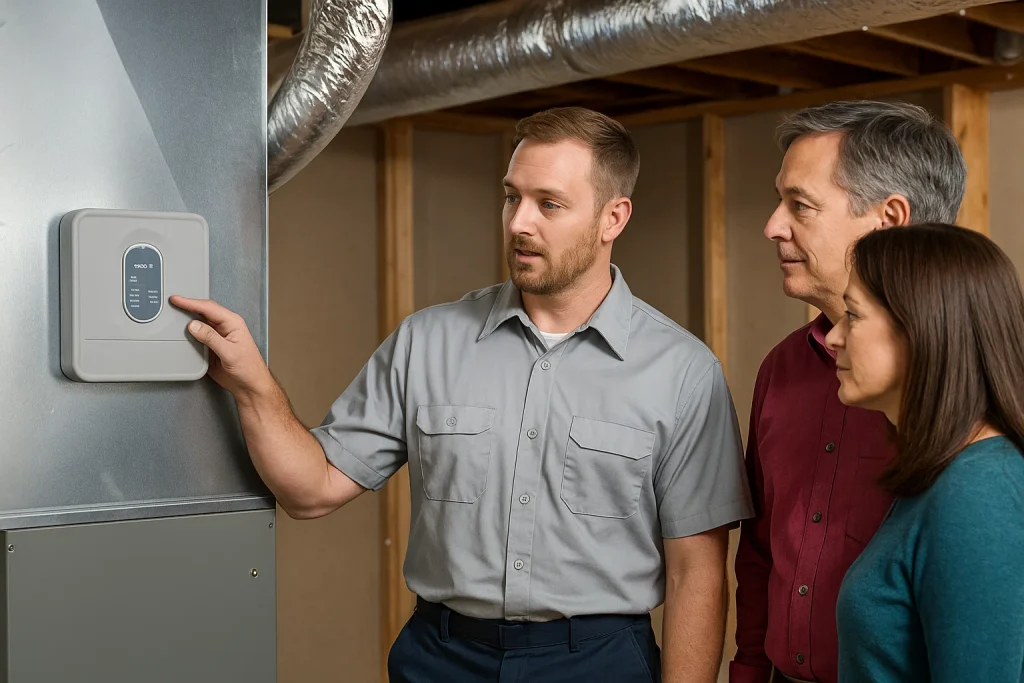When it comes to keeping your home comfortable year-round, a one-size-fits-all HVAC system often falls short. Many homeowners experience uneven temperatures, with some rooms too hot or too cold, leading to wasted energy and discomfort.
HVAC zoning is a smart solution that allows you to control the temperature in different areas or “zones” of your home independently. This technology not only enhances comfort but can also lower your energy bills by reducing unnecessary heating or cooling.

What Is HVAC Zoning?
HVAC zoning divides your home into multiple zones, each with its own thermostat and set of dampers installed within the ductwork. These dampers regulate the flow of heated or cooled air to each zone based on the desired temperature setting.
For example, you can keep the living room cooler during the day while maintaining a warmer temperature in bedrooms, or vice versa. By targeting the heating and cooling where it’s needed most, zoning systems prevent energy waste and provide more precise temperature control throughout your home.
Benefits of HVAC Zoning for Home Comfort
Customized Temperature Control
Every household has different comfort preferences, and even within a single home, some rooms naturally tend to be warmer or cooler due to factors like sunlight exposure, insulation quality, or room size. HVAC zoning lets each zone’s temperature be tailored independently. This means no more battling over thermostat settings or feeling uncomfortable because one room is too cold while another is too warm.
Eliminate Hot and Cold Spots
If you’ve ever noticed certain areas of your home are always stuffy or chilly despite running your HVAC system, zoning can help balance the temperature distribution. The motorized dampers direct airflow where it’s needed and reduce it where it’s not, creating consistent comfort in every room.
Increased Energy Efficiency and Cost Savings
Traditional HVAC systems heat or cool the entire house regardless of occupancy, leading to wasted energy in unoccupied rooms. With zoning, you can turn down or shut off heating and cooling in zones you aren’t using – like guest bedrooms or a finished basement – saving energy and lowering your utility bills.
Extend HVAC Equipment Life
By reducing the workload on your heating and cooling system through targeted airflow, HVAC zoning helps prevent overuse and wear. This can lead to fewer breakdowns and a longer lifespan for your equipment.
How HVAC Zoning Works
A zoning system typically includes:
- Multiple thermostats: One for each zone, allowing independent temperature settings
- Motorized dampers: Installed inside ductwork to open or close airflow to specific zones
- Control panel: Coordinates the system’s operation and communicates with your HVAC equipment
When a thermostat in a particular zone calls for heating or cooling, the control panel signals the dampers to open for that zone and directs airflow accordingly. Other zones can be set at different temperatures or turned off altogether.
Is HVAC Zoning Right for Your Home?
Zoning systems are especially beneficial in homes that have:
- Multiple stories, where upper floors tend to be warmer than lower floors
- Large or irregular floor plans with varying heating and cooling needs
- Rooms that are used infrequently or seasonally
- Occupants with different temperature preferences
- Older homes with uneven insulation or ventilation issues
Contact Don’s AC Service, Inc. today to schedule an appointment for your HVAC and indoor air quality needs!
